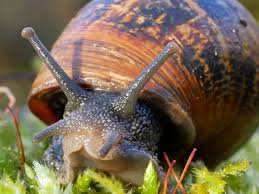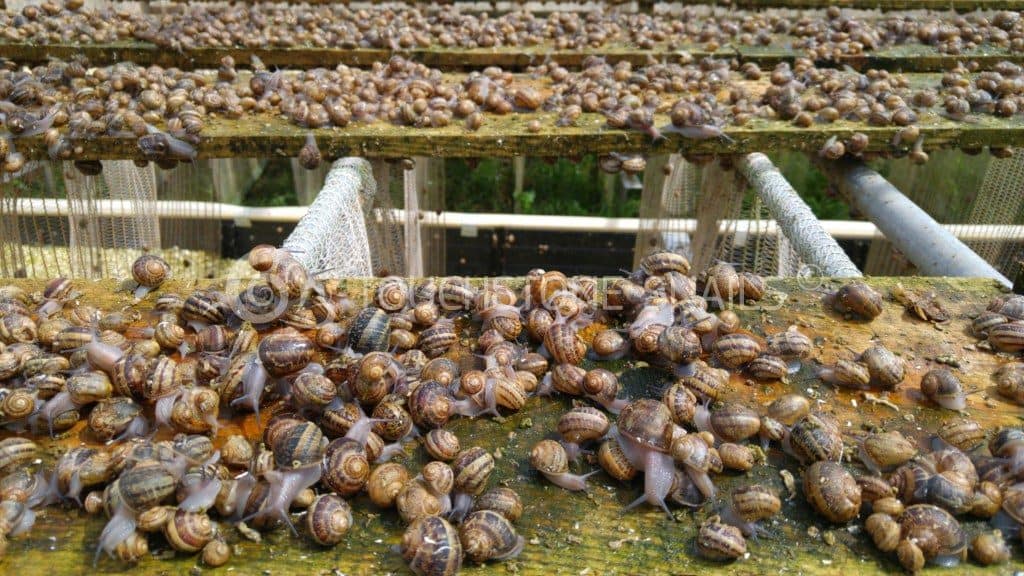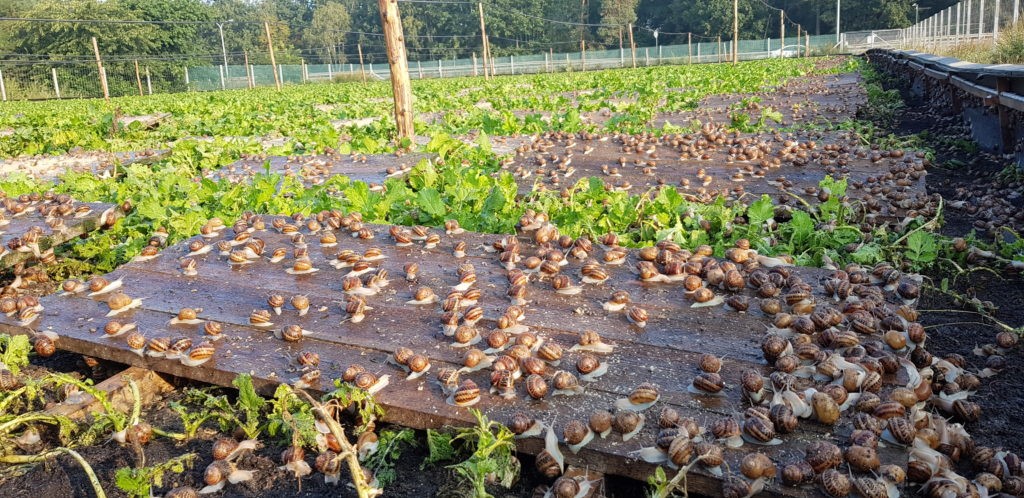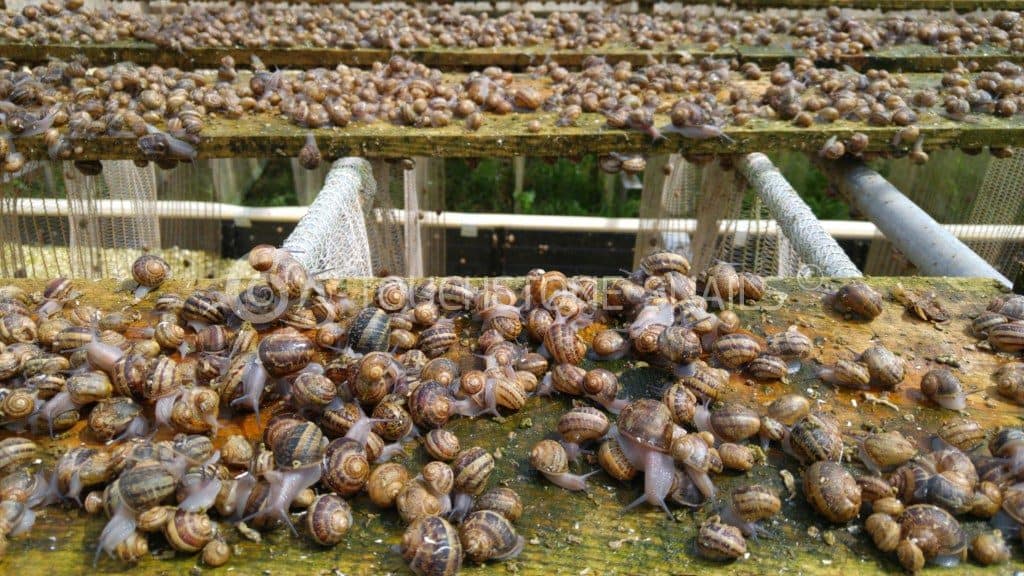HOST SNAIL
Snails are hermaphrodites – both sexes in 1 snail, though they cross-fertilize

HOUSING
Snail pen or housing is of utmost importance because it protects them from harm, poor weather condition. The housing must also protect them from pests and predators. You can use virtually anything to restrict their movement. However, they must be comfortable in a cool and moist environment that is stress free.
Snails of interest to me are the African Giant Snails:
1) Achatina Achatina
2) Achatina Fulica (both with relatively pointed apex, but different shell pattern)
3) Achachatina Marginata – curved apex. They are the biggest species of land Snails in Africa, and one of the best species in the world
Achatina Achatina lays 80-350 eggs at once, one to three times in a year
Achatina Fulica lays 100-400 eggs about six times in a year
Achachatina Marginata lays just 6-14 eggs four times in a year
FEEDING
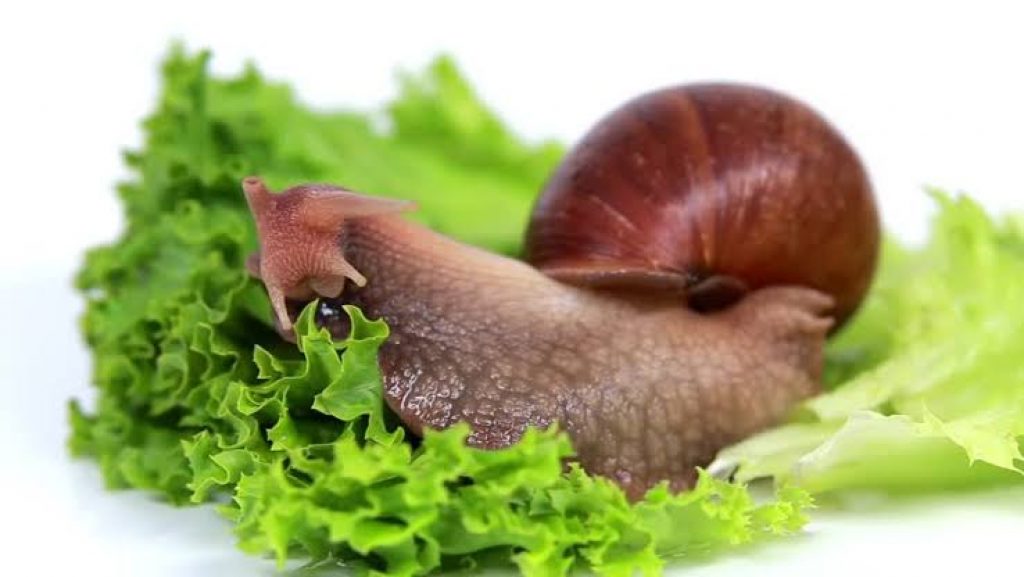
Snail has weak (chitinous) teeth which they use to rasp on food mats – leaves, fruits, softened meat. Just like babes, they love tasty food mats that are soft + less fibrous. Thus they love ripe succulent fruits more e.g. pawpaw, citrus, melon (watermelon).
You can try them on your tasty (well seasoned) cooked food – the smell attracts them and the taste makes them almost lose control. Really, your cooked seasoned spaghetti, fried garnished egg are also food to them. Actually they can eat anything that you can eat, so far it’s soft, well scented and tasty.
However, you’ll like to feed them with rich, economic feed (feed concentrate or feed combinations) that encourages fast growth. I actually formulate feed (using similar ingredients to poultry feed richer though) to feed them.
In doing such, you must know that changing their feed (from one type to the other) must be gradual and systematically done – otherwise your snails will rush at the good feed and thereafter start dying.
They should be supplied with potable water and be sure they drink it. This is better seen when you serve them with tasty drinks – tea, soft drinks. They can be fed with almost anything, especially what babies would love. However, they hardly eat grass.
When feeding them, select your feed items in such a way that you have:
– Quality
– Soft (and tasty – if possible)
– Less fibrous (leaves)
MANAGEMENT
To have a good look at their management, let’s understand their life cycle
Snail Eggs (egg look like lizard eggs) hatch into Snail Hatchlings within
- Achachatina Marginata: 2 – 4 weeks about 16-18mm when the weather is good.
- Achatina Fulica: 2 weeks – about 4mm in diameter
- Achatina Achatina: 3 weeks – about 8mm (average diameter)
(from personal observations)
They are hermaphrodites, so all supposed to lay – thus geometric multiplication
They get matured when their shell-turns (whorls) are:
- Achachatina Marginata: 5¼ – laying should start thereafter
- Achatina Achatina: 6¼ whorls
- Achatina Fulica: 6¼
(personal observations)
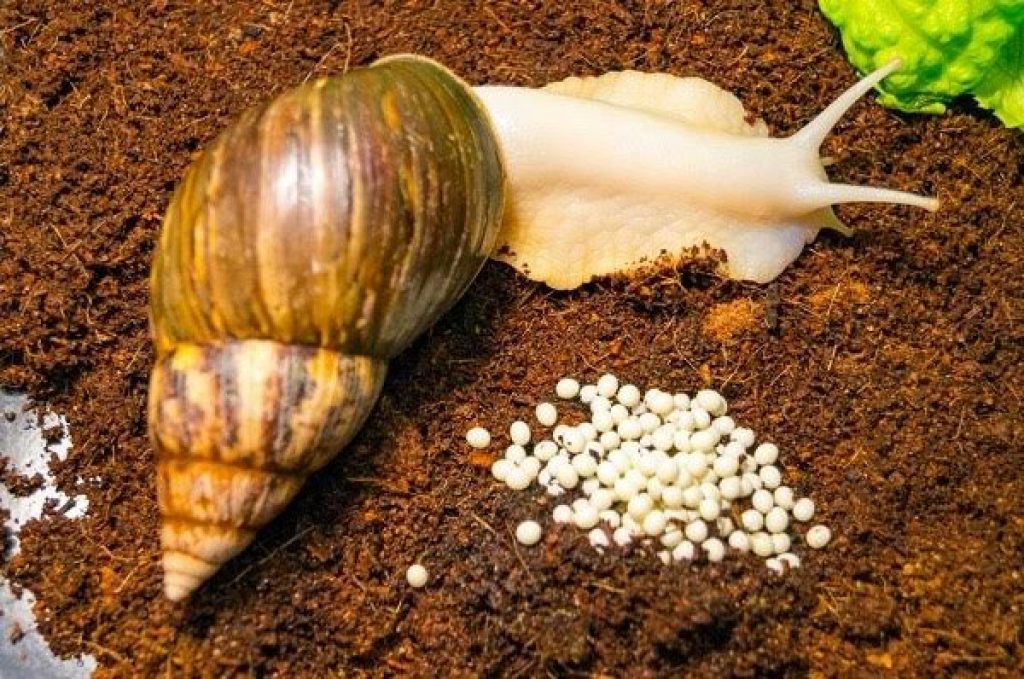
Thus, you can actually select Snails of the same type (2 upward) to start your farming. When farming commercially, you have to select your stock type – the species of choice
Your system of farming – are you using the paddock system or cage system
The feed and feeding pattern should be known whether concentrate or leaves/fruit or other types (as in the slides)
Questions From Participants
Question: Since snails feed at night, does that mean we should provide light in their house at night or can they find their food without light?
Response: No, they can smell their feed.
Question: What are the rich formulation ingredients?
Response: Thanks for asking – the protein content > 30%
Energy >3000kCal
Question: I heard if you want to engage in an open paddock system then the soil has to be treated. How is it treated, sir?
Response: Yes – to treat indwelling ants, you can use chemicals. When using chemicals, allow 4 to 5 heavy rain to drain off the chemicals before stocking
Question: As a starter who intends to farm on a commercial scale, which housing system will you advise?
Response: Both the tiered cage system and the paddock system are good, depending on your time (availability – if not much time use paddock) and space
Question: Thank you, Doctor, I want to know the best means to farm snails
Response: Your personality (time, availability/having a serious attendant), cash at hand, type of land (soil type) and few other factors will determine the advice to give – no hard and fast rules.
Question: What minimum amount will be required to float this kind of business?
Response: Depending on your scale. I usually advise starting with about 250-500 snails (minimum) for commercial-sized farming.
That may cost, depending on some factors, about N500,000 – if paddock system.
Your material type (wood/metallic frame)
Question: How can we prevent epiphragm in snail and if seen how can it be curbed especially in the cage system housing
Response: It tells you that your management is poor or whether to improve it.
Could be due to: Pen dryness, no feed, pest distress
